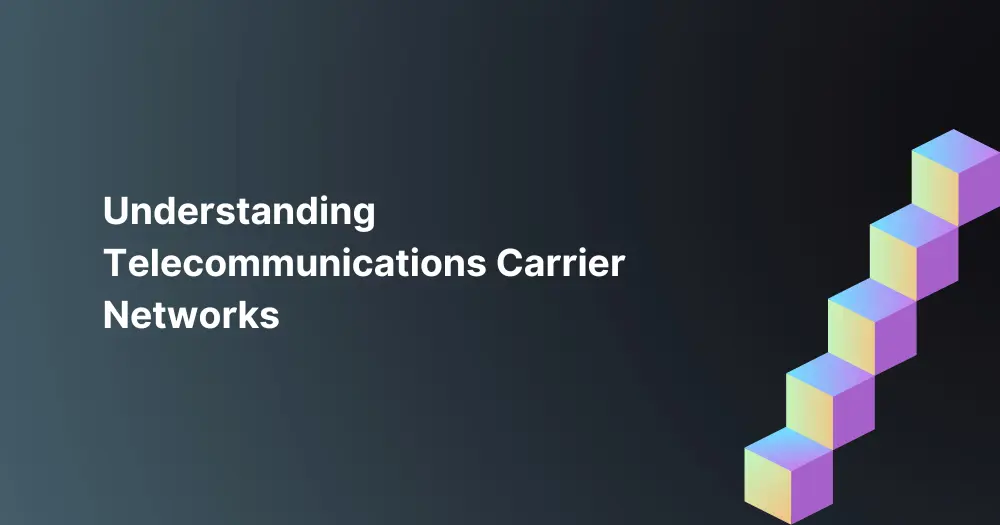
From the beginning of the telegraph in the 19th century, telecommunications have evolved significantly, becoming an essential component in connecting businesses with their customers, partners, and employees worldwide. In this blog, we will dive into telecommunications networks, examining the various types of networks within a carrier network, and highlighting the distinctions between cable, fiber, and mobile technologies. Additionally, we will discuss the equipment for setting up a network and provide insights on cost determination. Lastly, we will share valuable tips for monitoring network performance and detecting potential issues before they escalate.
A telecommunications carrier network is a complex system of interconnected nodes that transmit data, voice, and video signals. Several types of networks make up a carrier network, including voice, internet, and mobile networks.
Voice networks are responsible for transmitting voice calls between users. The Public Switched Telephone Network (PSTN) is the traditional voice network that uses circuit-switching technology to route calls. Voice over Internet Protocol (VoIP) recently became a popular alternative to PSTN. VoIP converts voice signals into digital data and transmits them over the internet, offering cost savings and additional features compared to traditional phone lines.
Internet networks are responsible for transmitting data between users and websites or applications. Internet Service Providers (ISPs) connect businesses and consumers to the global internet, while backbone networks are high-capacity data highways that link ISPs together. These networks employ packet-switching technology, which fragments data into smaller units called packets. These packets are then transmitted independently across the network and reassembled at their intended destination, ensuring efficient and reliable data transfer.
Mobile networks offer wireless connectivity for voice calls, text messages, and data services. Cellular networks facilitate signal transmission between cell towers and mobile devices by utilizing radio frequencies. Meanwhile, wireless data networks, such as Wi-Fi and 5G, grant high-speed internet access within limited ranges. These networks empower businesses with on-the-go connectivity and support various applications, encompassing mobile payments, remote monitoring, and more.
Three primary technologies stand out when delivering telecommunications services to businesses: cable, fiber, and mobile. These technologies come with their own distinct set of benefits and drawbacks. Assessing factors such as location, budget, and unique connectivity requirements is vital to determine the best option for your business.
Various equipment components are required to set up a telecommunications network for your business, such as:
Several factors determine the cost of telecommunications services for your business, including:
To manage costs effectively, businesses should carefully assess their connectivity requirements, research available options, and negotiate contracts with their chosen telecommunications carrier.
A Service Level Agreement serves as a contract between your business and a telecommunications carrier outlining the expected performance level and support for the services provided. Key components of an SLA include:
When negotiating an SLA, businesses should prioritize the components most critical to their operations and ensure they have a clear understanding of the carrier’s obligations and commitments.
Regularly monitoring your network’s performance is essential for maintaining optimal connectivity and identifying potential issues before they become critical. Tools and techniques for monitoring network performance include:
Understanding the basics of telecommunications carrier networks is crucial for businesses looking to optimize their connectivity and stay competitive in today’s digital landscape. By closely looking at different network types, technologies, and costs, businesses can make smart decisions about which services and carriers best fit their needs. Additionally, monitoring network performance and staying informed about advancements in telecommunications technology can help businesses maintain optimal connectivity and address potential issues before they become critical.
BlackPoint IT offers a comprehensive carrier services portfolio; we can help you optimize your network performance and reduce costs, whether you’re looking for voice, internet, or mobile solutions. Our services include network design and implementation, carrier management and optimization, and ongoing support and monitoring. Contact us today!